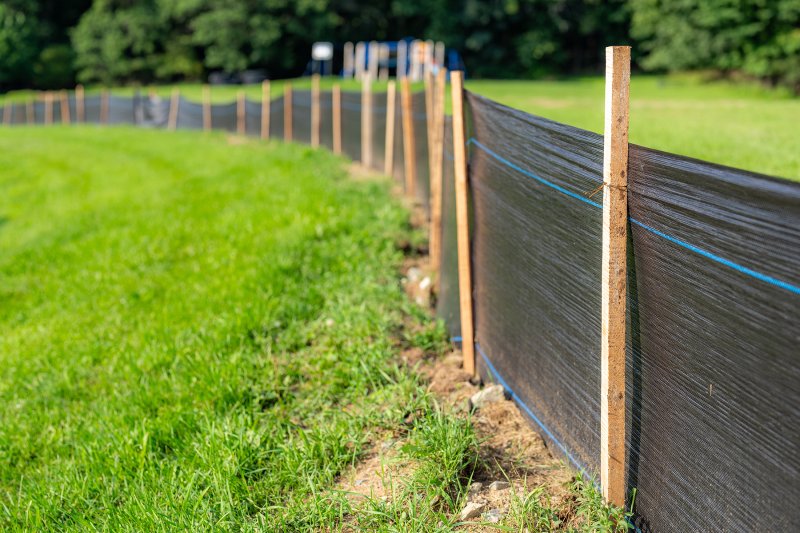Engineers question proposed county construction stormwater rules
Three engineers raised questions and concerns at a Nov. 19 public hearing on proposed rules intended to reduce stormwater runoff from construction sites in Sussex County.
The county planning & zoning commission ultimately delayed a vote on the law drafted by county staff with input from the Sussex Conservation District.
Hans Medlarz, a county engineer and project manager, outlined the proposal created at the request of county council following spring flooding this year.
The county decided to establish rules to help prevent stormwater runoff from reaching neighboring properties and bodies of water, where it can harm the environment.
The county will use data provided by developers to determine how much land can be cleared at a time, whether advanced sediment capture methods will be required and the parameters of some buffers.
The formula takes into account the slope of the bare site, the size of the upstream drainage area and distance to tidal waters. Little area west of Route 113 would be affected, Medlarz said at an Oct. 21 council meeting.
Charts are included in the proposed rules showing when additional mitigation steps are required.
Engineers attending the Nov. 19 meeting questioned the process and asked for an opportunity to evaluate the basis of the calculations.
“What I would like to see is that algorithm," said Mark Davidson, an engineer with Pennoni Associates. “We haven’t had a chance to even review what that entails. What does that calculation look like?”
When the Delaware Department of Natural Resources and Environmental Control amended its own stormwater regulations, it released such data to engineers for their review, Davidson said.
“It gave us a chance to provide comments within that calculation,” he said.
Medlarz said there are two proposed changes to the draft: making the rules a recommendation, not a requirement, and saying they may be considered by the engineer, not that they must be considered.
The county will rely on the accuracy of the data provided by developers, Medlarz said.
P&Z Commissioner G. Scott Collins said he worries that some changes will weaken the proposal.
“Why not strictly require it?” Collins asked.
“There was a discussion about overlapping regulatory authority,” Medlarz said. “That was the main trick. We carefully intended that the county would not review that; they would just say, ‘Use this practice as it says in the state law.’”
Few projects already approved by the county would not have complied with the proposed rules, Medlarz said.
State law allows up to 20 acres of land to be cleared during construction, he said. The draft county law could reduce that figure, depending on the size of the combined upstream area that drains to the construction site or if the bare site has a slope of more than 3 degrees for more than 100 feet.
The rules can require additional buffers to limit flow of stormwater from construction sites.
Kenneth Christenbury, an engineer with Axiom Engineering, asked for clarification of the law concerning which runoff is regulated.
Property-line discharges in the form of overland flow, not concentrated release through a pipe or other conveyance, are covered, Medlarz said.
Jim Eriksen, a professional licensed civil engineer for Solutions IPEM, asked about details on buffer requirements. He said previously approved rules have not been in effect long enough to know if they are effective.
Some buffer rules could make a project impossible to develop or limit the ability to preserve forest land and still comply, he said.
“Any removal in flexibility is going to impact density,” Eriksen said. “Any time you impact density, it impacts affordability, which is obviously also a very sensitive and hot topic right now.”
“Are there things we could do better?” P&Z Chair Holly Wingate asked. “I’m sure there are. But we can’t make it unreasonable at the same time and make it so limited that we’re never going to be able to comply with the rules we’re making.”
The commission left the record open until Friday, Dec. 5, to get more information from the Sussex Conservation District.
Kevin Conlon came to the Cape Gazette with nearly 40 years of newspaper experience since graduating from St. Bonaventure University in New York with a bachelor's degree in mass communication. He reports on Sussex County government and other assignments as needed.
His career spans working as a reporter and editor at daily newspapers in upstate New York, including The Daily Gazette in Schenectady. He comes to the Cape Gazette from the Cortland Standard, where he was an editor for more than 25 years, and in recent years also contributed as a columnist and opinion page writer. He and his staff won regional and state writing awards.
Conlon was relocating to Lewes when he came across an advertisement for a reporter job at the Cape Gazette, and the decision to pursue it paid off. His new position gives him an opportunity to stay in a career that he loves, covering local news for an independently owned newspaper.
Conlon is the father of seven children and grandfather to two young boys. In his spare time, he trains for and competes in triathlons and other races. Now settling into the Cape Region, he is searching out hilly trails and roads with wide shoulders. He is a fan of St. Bonaventure sports, especially rugby and basketball, as well as following the Mets, Steelers and Celtics.




















































